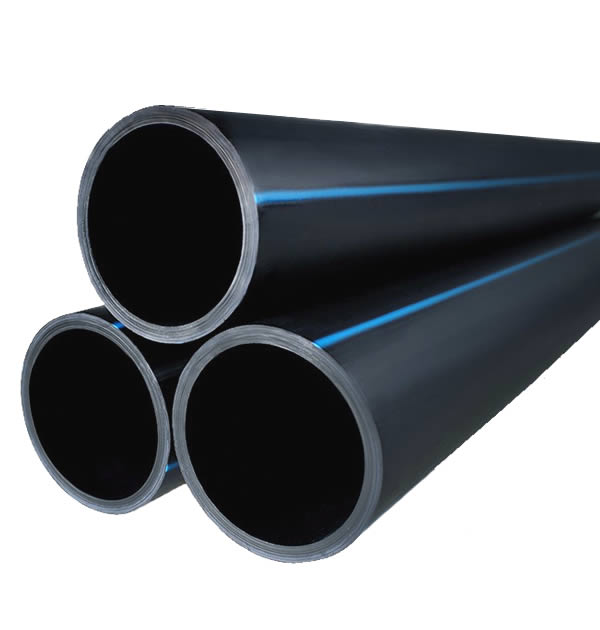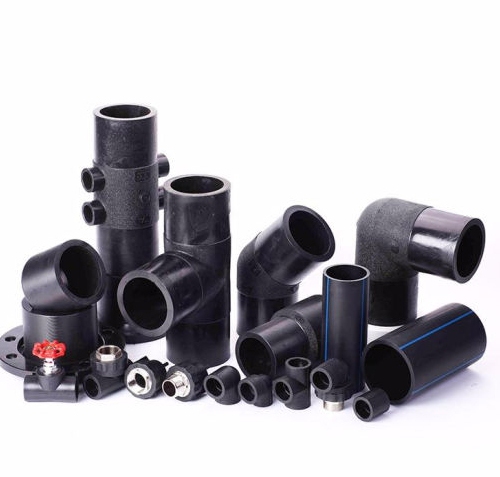Hdpe Pipes (High Density Polyethylene Pipe) are the indispensable of you which we produce in the desired diameters between 20 mm – 800 mm and Pn4-Pn32 pressure classes with high performance and high quality. These pipes are quite useful for carrying potable water, slurries, hazardous wastes, wastewater, cables, chemicals and compressed gases as well as oils. Moreover, these are highly demanded for landfill gas extraction and cable ducting.
Piping made from polyethylene is a cost effective solution for a broad range of piping problems in municipal, industrial, marine, mining, landfill, duct and agricultural applications. It has been tested and proven effective for above ground, sur face, buried, sliplined, floating, and sub-sur face marine applications.
What is HDPE Pipe?
High-density polyethylene pipe (HDPE) is a pipe material able to carry potable water, wastewater, chemicals, hazardous wastes, and compressed gases.
High-density polyethylene pipe (HDPE) can carry potable water, wastewater, slurries, chemicals, hazardeous wastes, and compressed gases. In fact, polyethylene pipe has a long and distinguished history of service to the gas, oil, mining and other industries. It has the lowest repair frequency per mile of pipe per year compared with all other pressure pipe materials used for urban gas distribution.
Polyethylene is strong, extremely tough and very durable. Whether you’re looking for long service, trouble-free installation, fle xibility, resistance to chemicals or a myriad of other features, high-density polyethylene pipe will meet all your requirements.
What makes HDPE so great?
It is resistant to corrosion, abrasion and chemicals, creating significant durability advantages. It is essentially leak free when using the pipe fusion method to join the pipe, making connections as strong as the pipe itself. It is lightweight and flexible, creating ease of installation and saving time on the job.
What is the meaning of HDPE pipe?
HDPE pipe is a type of flexible plastic pipe used for fluid and gas transfer and is often used to replace ageing concrete or steel mains pipelines. Made from the thermoplastic HDPE (high-density polyethylene), its high level of impermeability and strong molecular bond make it suitable for high pressure pipelines.
What is HDPE pipe specifications?
HDPE fittings and transitions shall meet ASTM D3261. HDPE pipe shall have a minimum density of 0.955 grams per cubic centimeter. All HDPE pipe and fittings shall have a Hydrostatic Design Basis (HDB) of 1,600 psi.
How many types of HDPE pipe are there?
The pipes manufactured by PE 100 polymeryzation molecules by ethylenes and used in liquid transportation projects and called HDPE 100 pipe or PE100 pipes – Polyethylene Pipe. HDPE pipe (High Density Polyethylene Pipe) is manufactured by PE 80 raw materials used in gas projects and are referred to as HDPE 80 or PE80.
Advantages of HDPE Pipes
Hdpe Pipe (High Density Polyethylene Pipe) is hard, light, solid pipe with a smooth inner and outer surface. Transportation of HDPE Pipe requires minimum equipment and is easily applied in all field conditions, on ice or in wet floor, marshy areas.
Hdpe pipes do not support rust and making it indispensable for you. It is resistant to potential chemicals found in salt water and sanitary sewerage wastewater.Corrosive acids, bases and salts offer better resistance than most pipe materials. With these features Hdpe (PE100) pipes will not let you down.
HDPE pipes have been positively influenced by the technological developments that have been carried out to date and have been one of the most preferred pipes. Its physical and chemical properties the best solution for infrastructure Works is an easy application .
• HDPE Pipes; preserves the general properties of fluids.
• HDPE Pipes; The best solution for drinking water systems.
• HDPE Pipes; high resistance to chemicals.
• HDPE Pipes; it is simple to use on slopes due to its flexible shape. The other side is environment friendly.
• HDPE Pipes; According to the direction of movement in the movement of the ground itself and does not break.
• HDPE Pipe joining methods are very simple.
• HDPE Pipes; easy to carry and hence the transportation is cheap.
• HDPE Pipes; Apart from nitric acid it is highly resistant to acids alkalis and microorganisms. • Hdpe Pipes; They are not affected by underground movements as they do not have breakage feature
• HDPE Pipes; They don’t transmit electricity.
• HDPE Pipes; has good friction wear and stainless properties.
HDPE Pipe Usebility
Hdpe Pipes are easier to process, install and provide cost savings during construction. Structurally, other pipes tend to crack and break. Hdpe pipe (PE100) is designed to withstand the impact in the cold weather during installations. In the marine applications, hdpe pipes can be mounted on the shore in a long periods and then fitted in place. Try these Hdpe pipes immediately with these specialities.
Application Areas of HDPE Pipe :
- For transportation of Potable water.
- Irrigation and sprinkling system.
- Chemical Processing Plants.
- Effluent Lines.
- Surface Water Drainage.
- Ventilation of Corrosive Gases.
- Relining of Old Sewers.
- Horticulture & Green House Technology.
- Industries
- Houses
- Mines
- Agricultural sector
HDPE PIPES TECHNICAL SPECIFICATIONS
HDPE 100 Pipes are produced in the highest technology and quality from 20 mm to 800 mm diameters. The properties of polyethylene, it is one of the best alternative among the pipe types used in pressurized clean water systems. They are used in the construction of underground and overhead pressurized water network lines, marine discharge projects, fish production farm production cages.
Features and Benefits of HDPE Pipes
- High reliability and proven service performance
- Resistance to low temperature
- High impact resistance
- Abrasion resistance
- Excellent flow characteristics
- Excellent chemical and corrosion resistance
- Long service life
- Great flexibility, light weight, easy and fast installation.
- Excellent water hammer resistance.
- Ideal in shifting soil condition and earthquake prone areas.
Hdpe Pipes Connection Methods
HD Polyethylene pipes and fittings are connected to each other by melting or mechanical fittings. The Hdpe pipes made from materials other than polyethylene can be connected to the outside with squeezed inserts, flanges or other suitable adapters made for the purpose. Connection fittings provide convenience compared to the places to be used.
Combinations Methods
- Electrofusion (EF) Welding Type
- Butt- welding Type
Transport of Hdpe Pipes
*PE pipes maintained at freezing point or lower temperature are becoming low against impacts. For this reason, the pipes should not be dropped, they should not crawl on the ground and should not be hit.
* PE Double-sided support should be provided when the pipes are cut with a hand saw and if there is a freezing point and a lower temperature, breakage or twisting may occur.
* When transporting HDPE pipes, the length of the pipe should be equal to the full length of the truck.
*The most important issue to be taken into consideration when downloading HDPE pipes is to use a rope or chain. Pipe and fittings should not be thrown. Using a crane or forklift is the most important downloading method.
We will discuss about Manufacturer of Quality & Durable All Type of HDPE Pipes, Corrugated Pipes, Coil Pipes. HDPE Pipes Manufacturer, Distributor, Supplier, Trading Company, HDPE Pipes India. Timely Delivery. Competitive Price. Superior Quality. Types: Water Tank, HDPE Coil Pipes.

